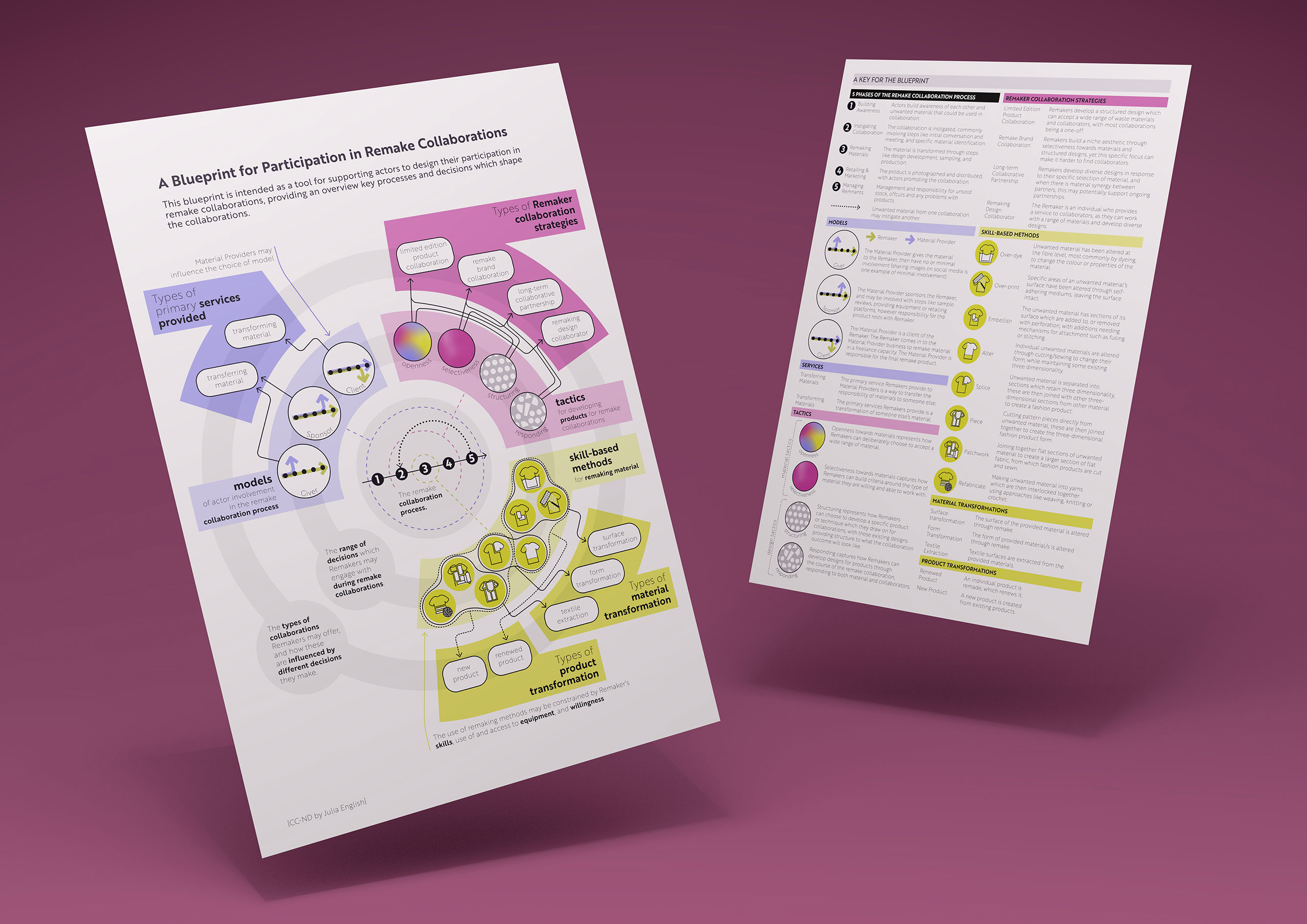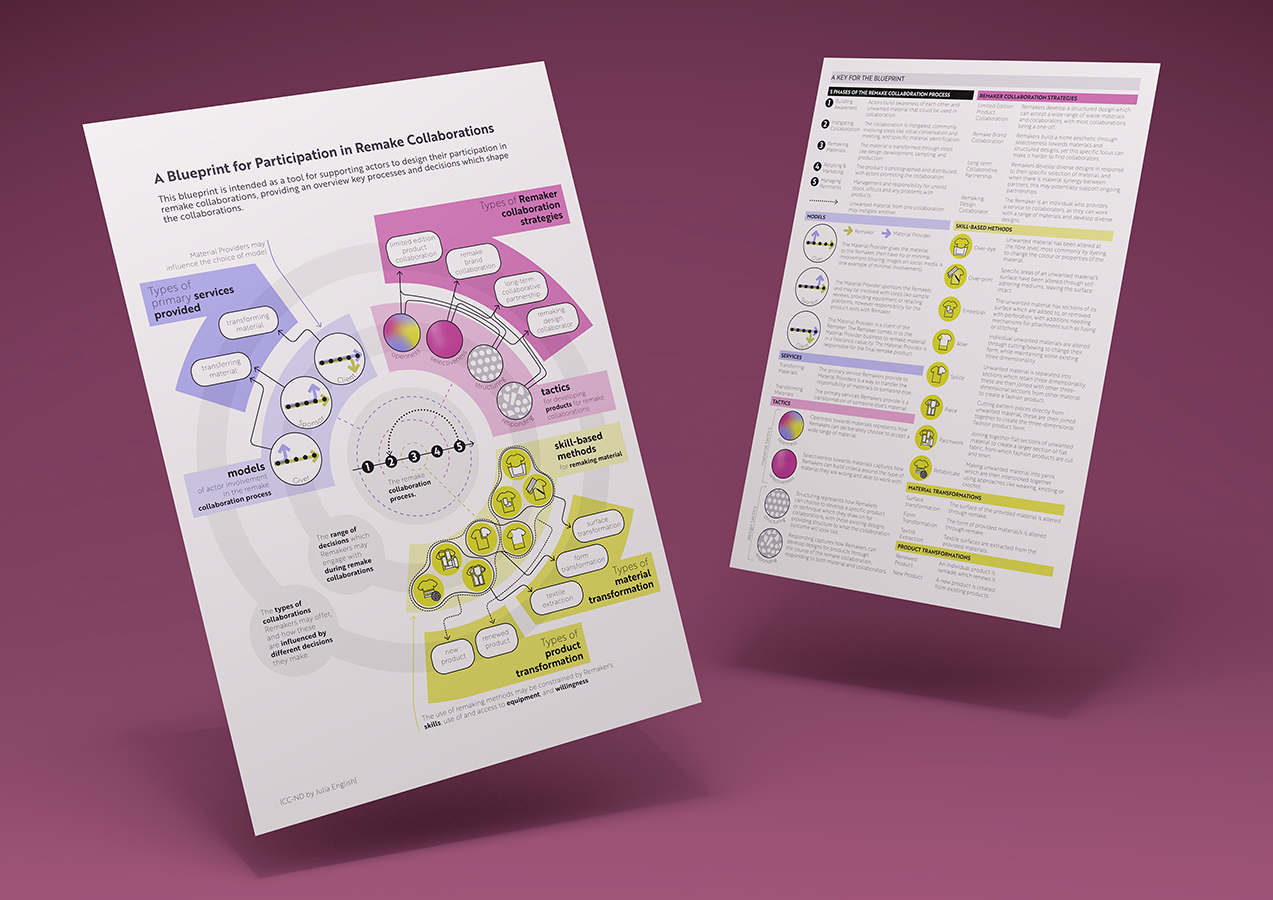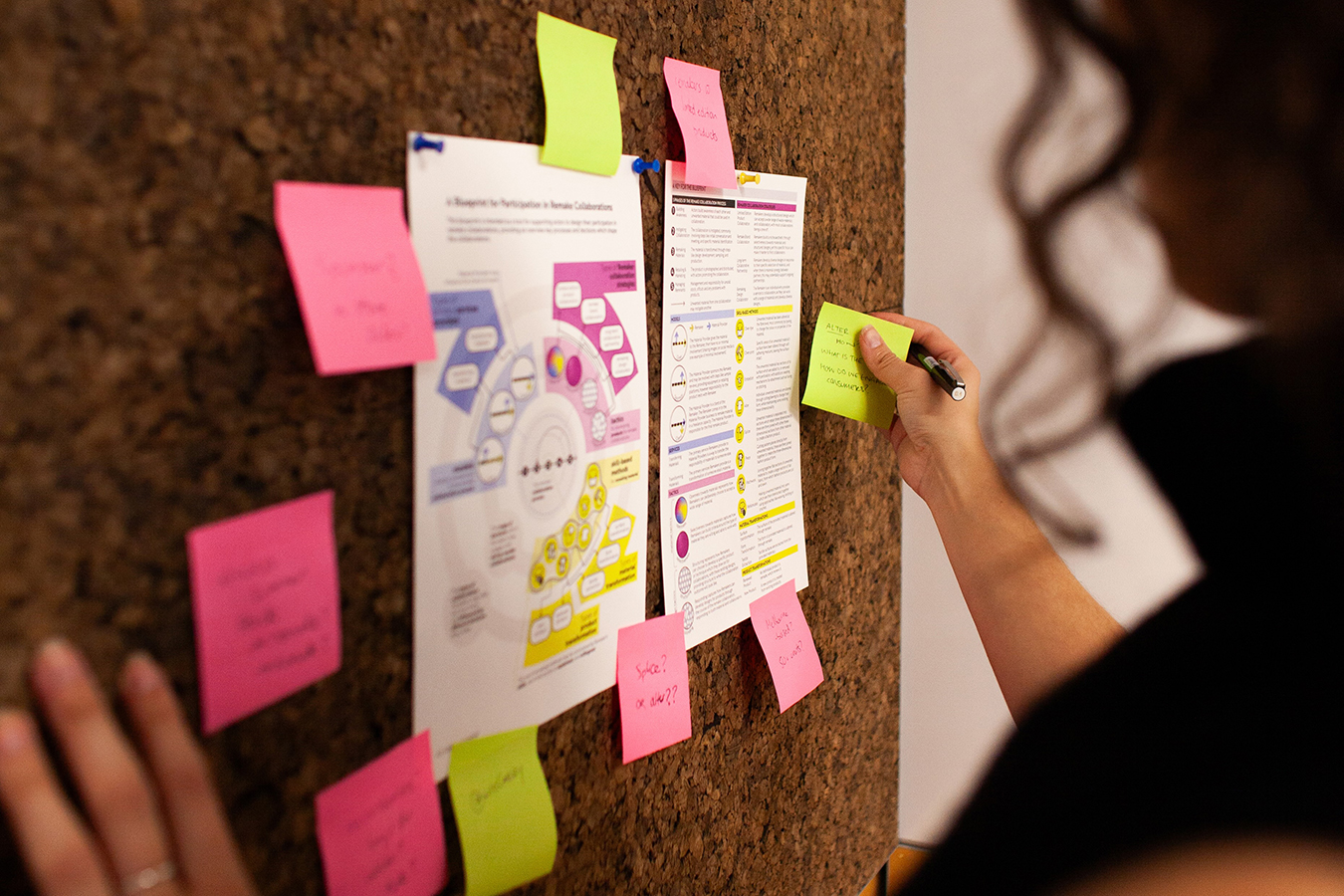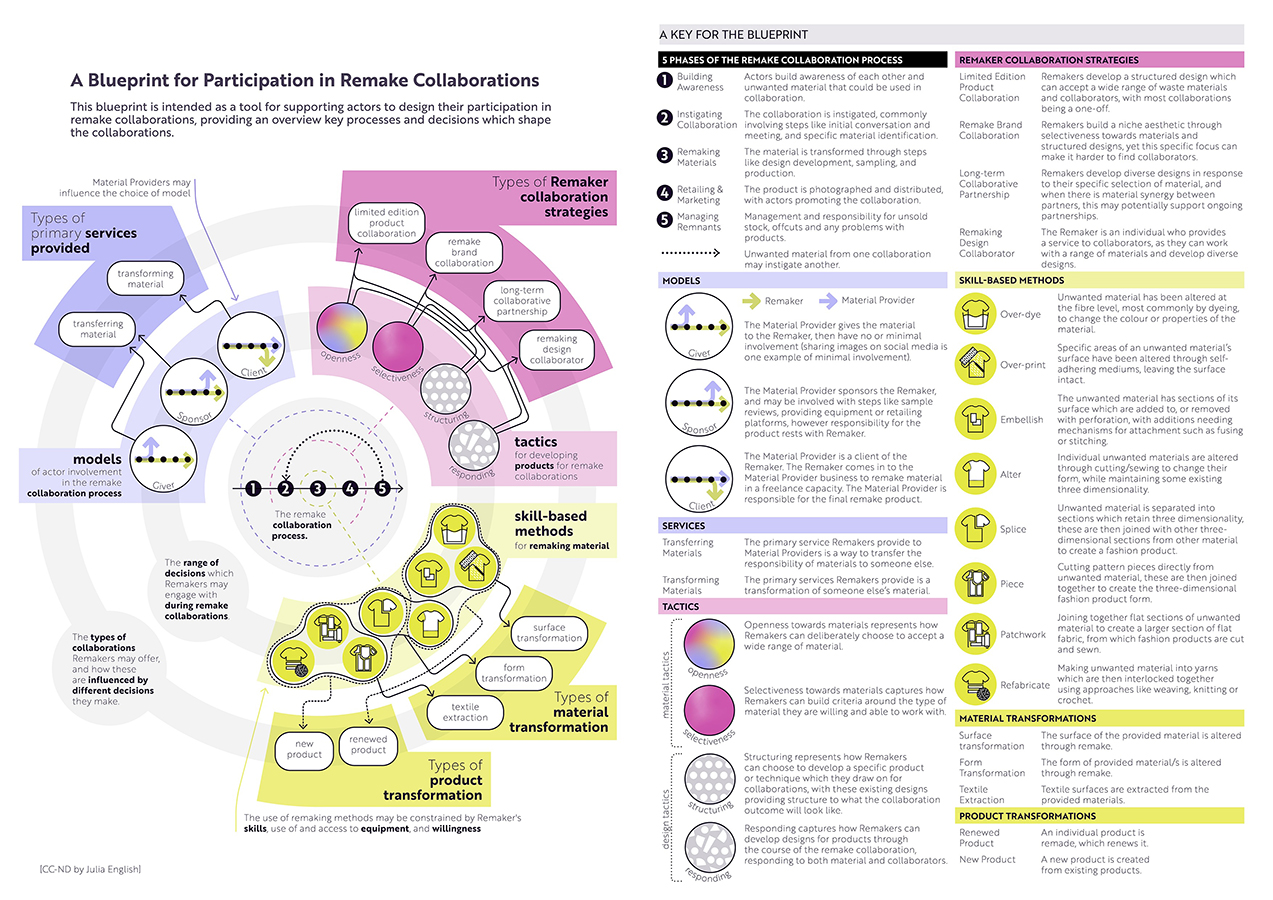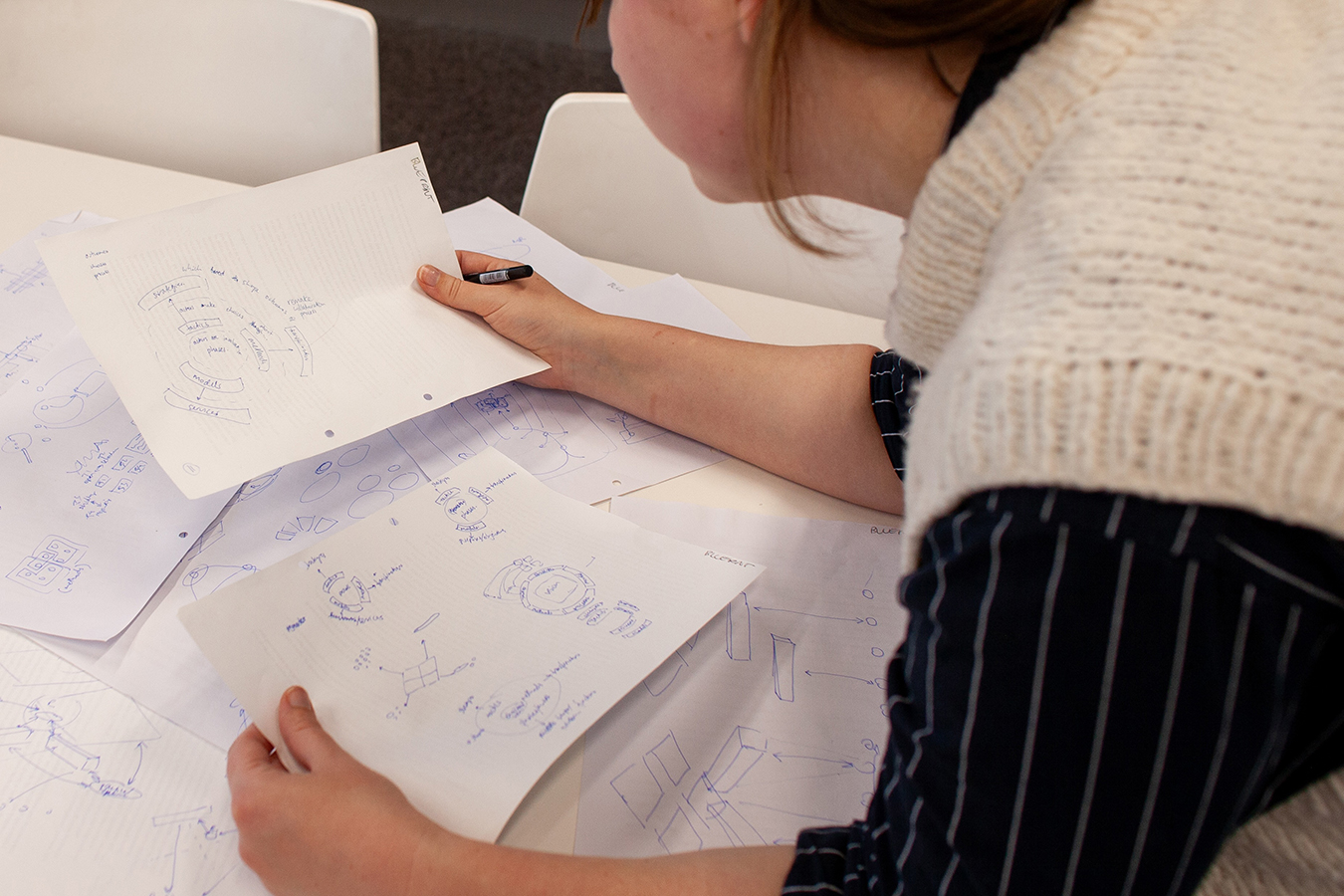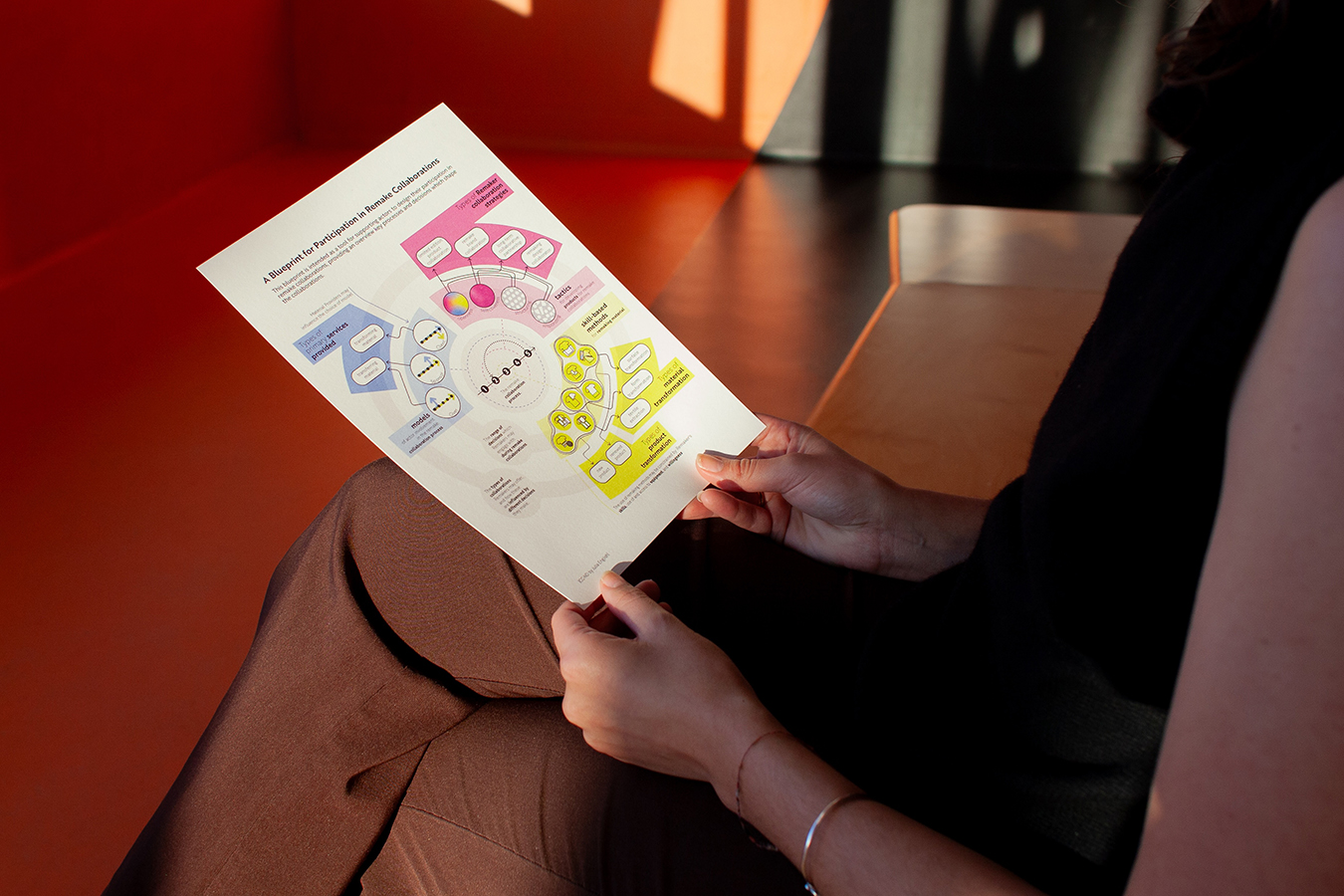To understand how these Australian fashion businesses have been forming partnerships to transform textile waste, this project investigated 38 cases of remake collaborations within Australia, learning more about these circular practices.
By analysing the types of products created and interviewing six of the remaking designers involved, the project explored the inner workings of these collaborations, and drew out knowledge to enable more participation in the future.
As the project progressed, the complexity of choices within remaking practices became apparent, from employing different methods, to focusing on specific strategies, services, or product types. The biggest challenge was representing the breadth of practices and decisions in a way enabled others to navigate these logically.
This was resolved through the design of a comprehensive diagram - the blueprint - breaking down remaking into interconnected parts to actively consider both the process of collaboration, the models of involvement, and the ways actors can approach creating products and transforming materials.
The blueprint synthetises a 400-page PhD thesis into a single page diagram and associated key, capturing the complexity of design decisions involved. As a tool for industry, it has had initial positive feedback from local designers who have understood how this can help them situate and communicate their work, and has been applied as part of core course content within RMIT’s School of Fashion and Textiles to educate emerging designers.
While based on existing practices, the blueprint goes beyond simply understanding how actors collaborate to remake textile waste, but rather translates these complex options into a guide for others, building symbols and language to help users communicate and navigate these practices.

